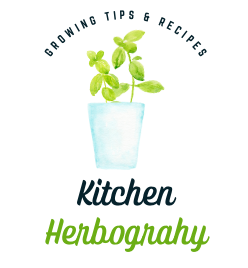As an Amazon Associate I earn from qualifying purchases. This website also participates in other affiliate programs and may earn commissions if you shop through the links used on this website.
(This article was originally published on July 29, 2022 and was last updated on September 21, 2022)
Your beautiful new basil plant is calling your name. With large leaves and an aroma that has inspired your menu for the week, you can’t wait to start harvesting. But you are unsure how to pick basil leaves while ensuring your plant continues to thrive? Below we explore how to harvest basil without killing the plant, along with some ideas about what to do with the leaves afterward.
Basil plants are relatively easy plants to grow and care for, so they hold a prime spot in many gardens, on super sunny widow ledges, and on kitchen counters growing inside.
Not to mention, they’re also delicious. Indeed, fresh basil leaves make a great addition to a wide variety of kitchen creations.
However, if you are new to gardening or growing basil, it can be tough to figure out the proper method of harvesting basil.
Many beginner gardeners wonder how to harvest basil leaves as you need them, without damaging or killing the plant.
The great news is pruning basil is an essential part of growing basil. And in fact, your basil plants will actually thrive once you get the correct method of harvesting basil nailed down!
By regularly (and correctly) harvesting basil, your basil plant will grow large and bushy, and you will get treated with an abundant basil harvest of delicious, fragrant leaves lasting the entire growing season (and possibly even beyond!). Whether you’re harvesting sweet basil or another varietal, the method is the same.
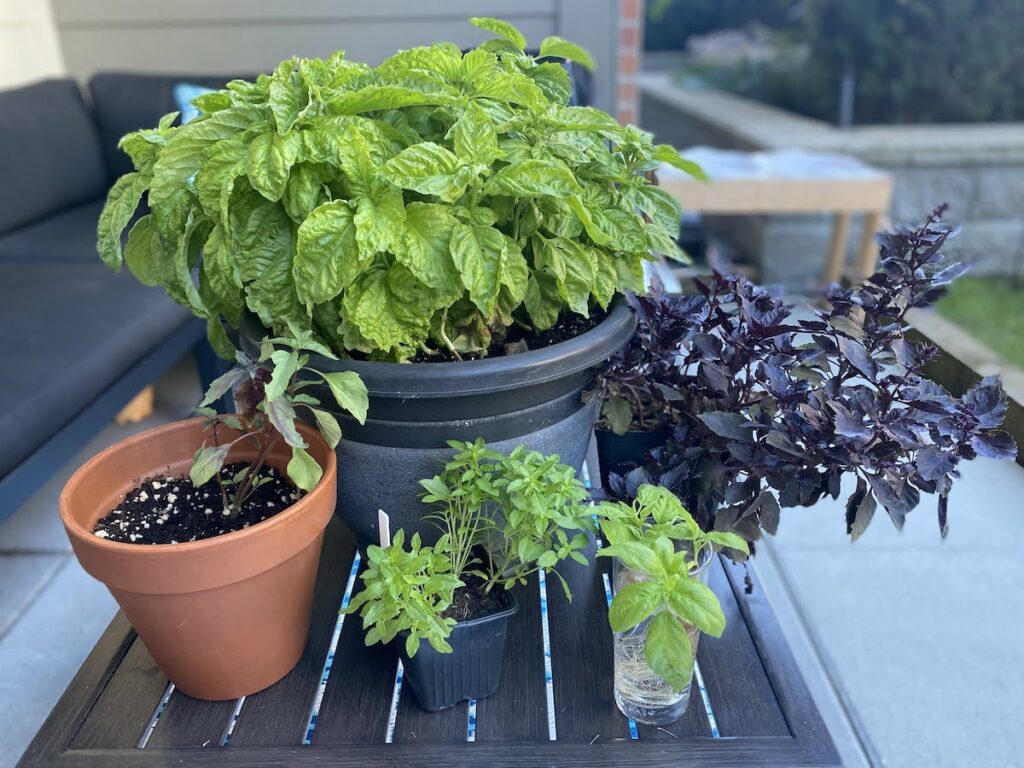
Sound good? Keep reading to find out how to harvest basil in a way that will help your plants grow, thrive, and ensure a long and rich harvest.
Harvesting Basil Plants: The Basics
Harvesting basil is a fairly straightforward process.
When done right, your basil plant will put additional energy into producing new stalks and larger leaves. The result is a large, bushy basil plant that develops flavorful leaves for the entire growing season.
However, you need to harvest basil the right way to help the plant thrive.
Only Harvest Basil That is Fully Established
The first step is to allow new plants to get fully established. It may be tempting to harvest those first young leaves, but if you do, you will stunt the plant’s growth.
Allow your basil plant to grow between four to eight sets of leaves before you begin harvesting. Most basil plants will reach this stage roughly 6 to 8 weeks after planting from seed.
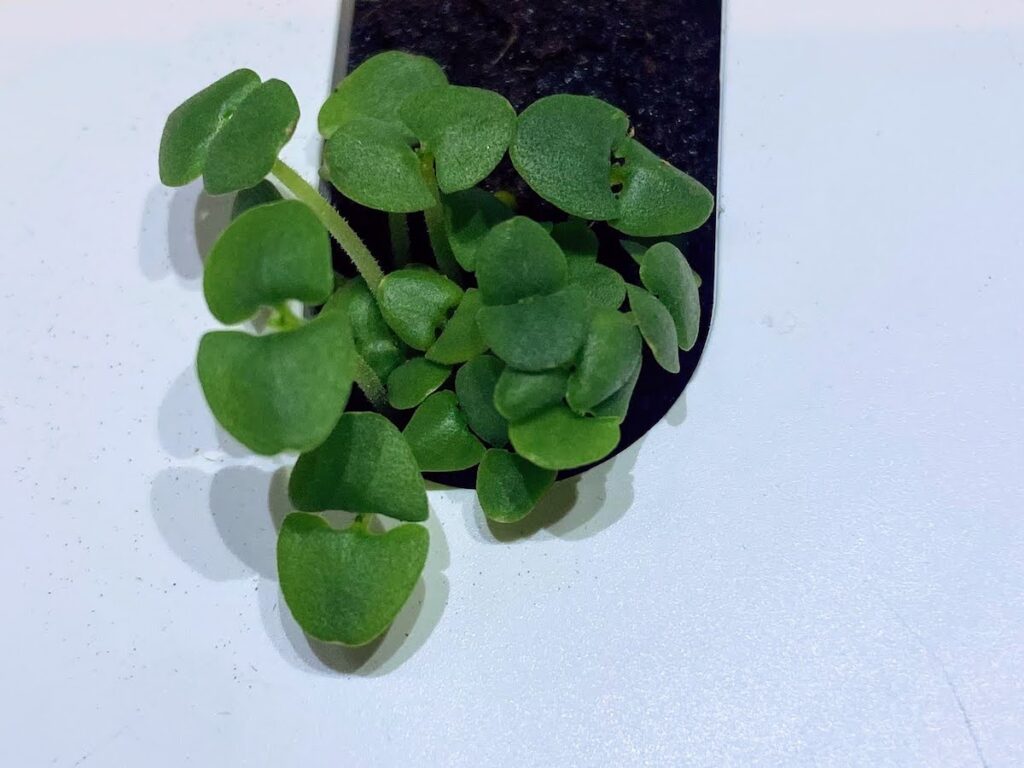
Harvest Basil Slowly at First
Once your basil plant has reached this stage, you can begin harvesting a few leaves at a time.
To remove the leaves, use snips, kitchen shears, or gently pinch them off with your fingers, pinching/trimming at the base of the leaf where the leaf meets the plant stem.
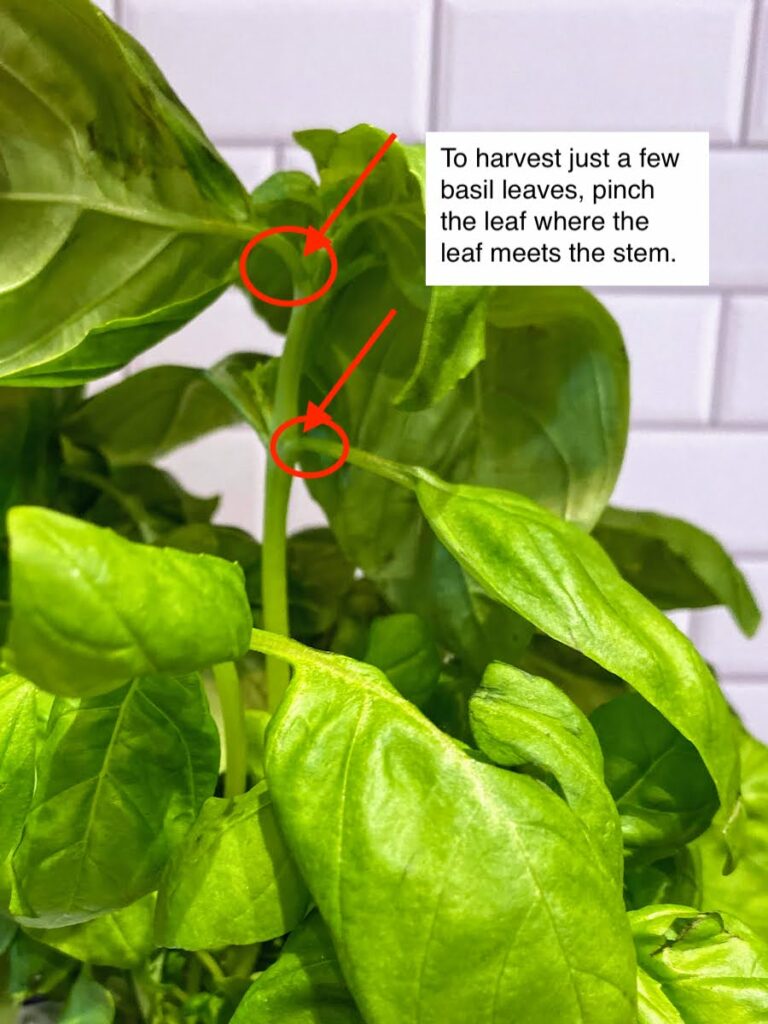
Harvest leaves from the top – leave the bottom sets of leaves alone, and pinch off the leaves at the top of the plant. This lets more light access the bottom leaves, and encourages more growth overall, helping the basil grow into a dense and bushy plant, rather than getting leggy.
Get Ready to Enjoy a Bounty of Fresh Basil
Once your basil plant has really begun producing, you can start harvesting more fresh basil leaves at a time, harvesting stems of basil, rather than pinching off individual leaves.
That said, there is a best practice for how to trim basil.
I like to harvest in the morning, as it’s said the essential oils are at their strongest. Watering basil is also best done in the morning, and I also find its a good time of day to check for pest damage or stress, such as holes from pests eating the leaves, droopy or wilting leaves, or signs or more serious problems like leaves that are turning white, black, brown, or yellow.
Remove a set of leaves with the stem to encourage further growth and avoid damaging your plant. Snip or gently pinch the stem off just above a lower set of leaves (about 1/4″ above a node).
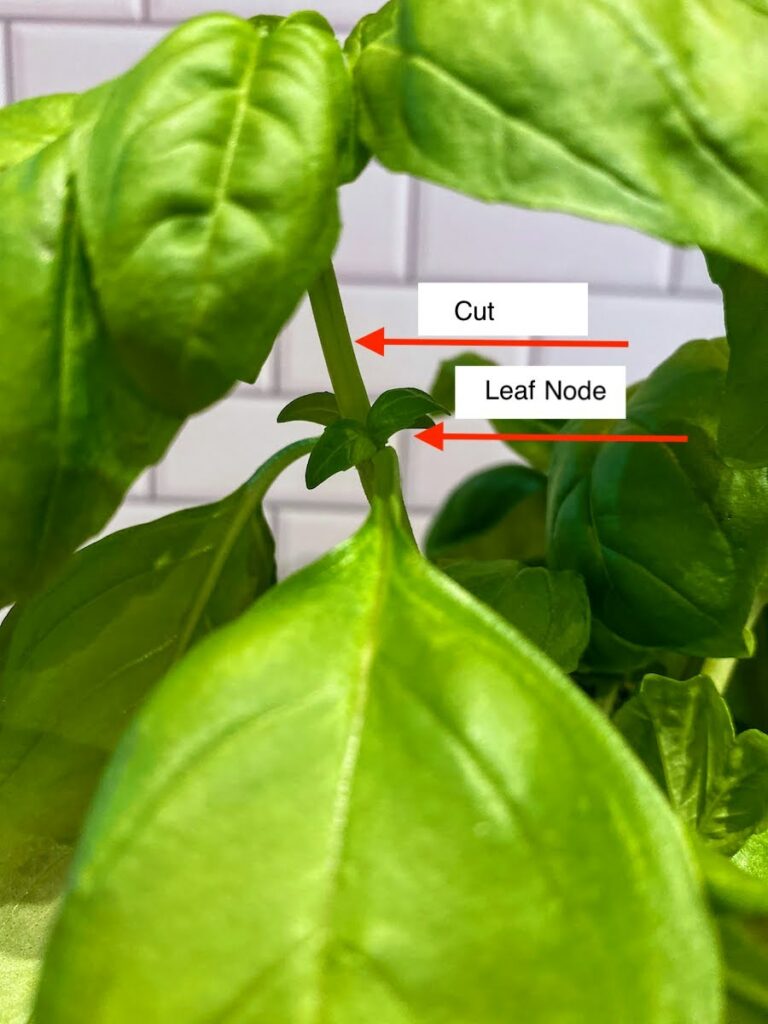
When you harvest basil leaves and stem close to lower (or newer) growth, the basil plant will direct energy into growing more shoots in that area. This process creates those large, luscious plants you often see in photos. Fair warning, if you’re growing in pots all this luscious growth may mean you need to size up to a bigger pot size to accommodate your basil plant!
Also worth noting, do not allow too much bare stem to remain, as this will discourage additional leaf growth.
Note: if you’re harvesting a stem for a cutting, and to propagate a new plant, follow this guide!
Don’t Harvest Too Much at Once
It may be tempting to harvest all those big, beautiful leaves on your basil plant all at once…after all, the basil season is short for most of us, so we need to maximize that perennial bounty.
However, removing too much of your basil plant at once will inhibit or stop growth. In both the early and later stages, you’ll ideally limit your harvest to no more than ⅓ of the whole plant. If you need more leaves for a recipe, you can safely harvest up to ½ of your basil leaves without damaging the plant. However, if you regularly need more basil than you can harvest, you might want to plant more.
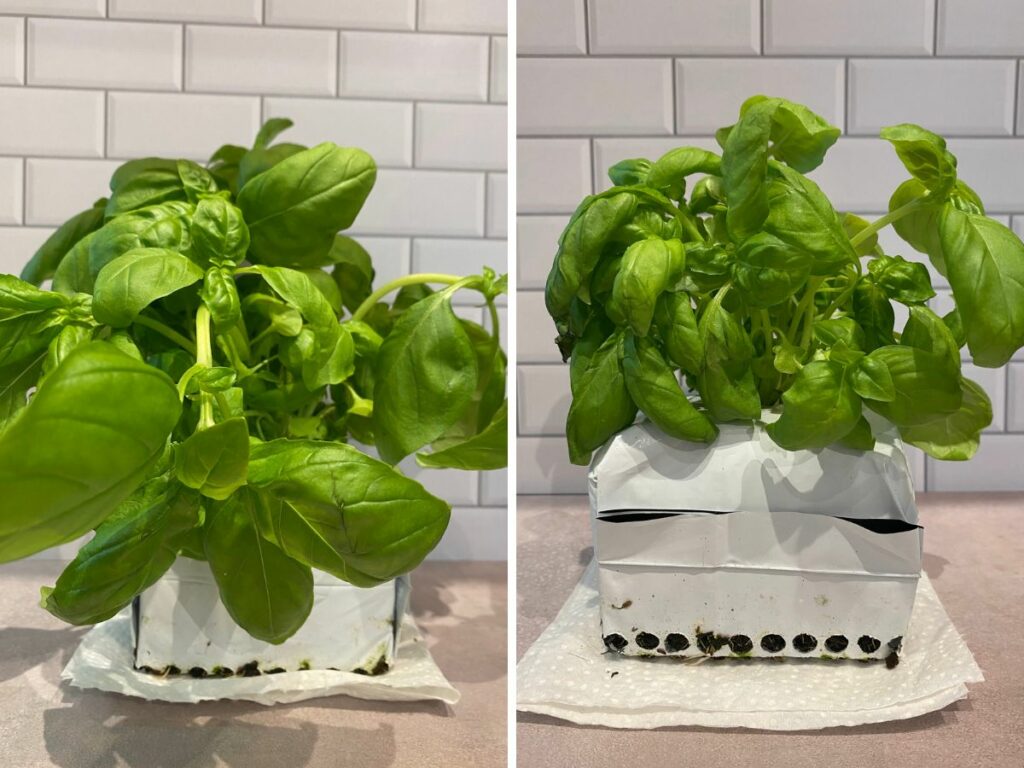
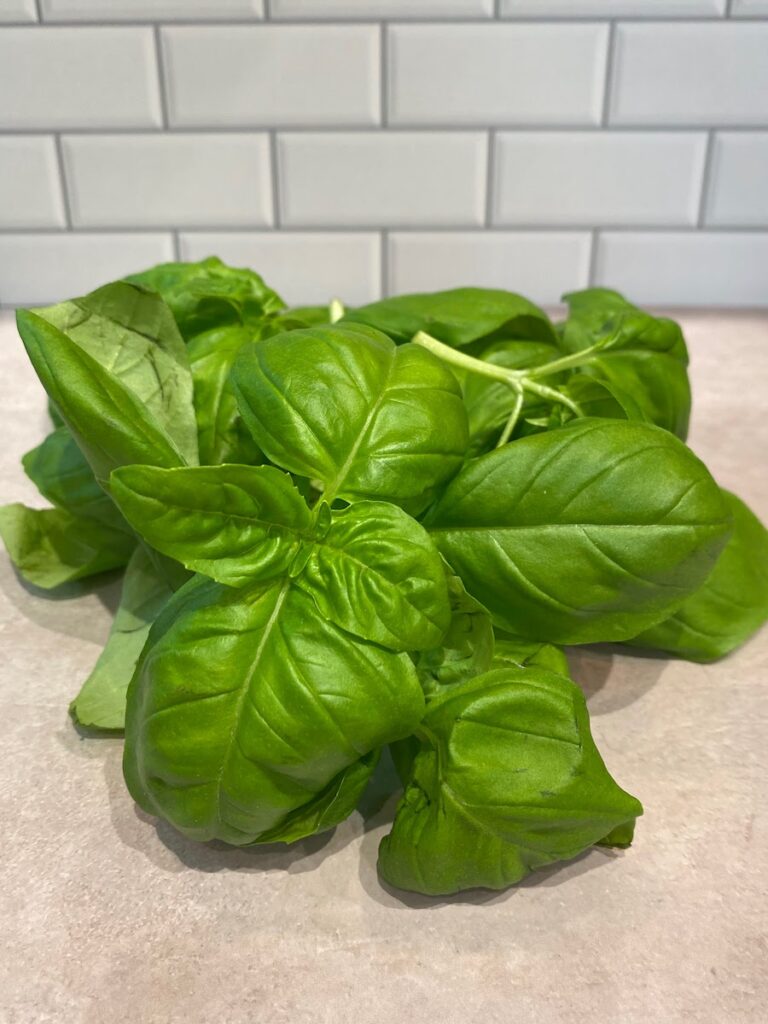
Harvesting Basil is Best Done in the Morning
The essential oils in basil leaves are highest in the morning, before the heat of the day sets in. For the most flavorful harvest, trim basil leaves in the morning.
How Often to Harvest Your Basil Plant
You will want to harvest basil leaves regularly to encourage the continued growth of your plant. Typically, harvesting every 7-10 days provides enough time for new leaves to develop. You can continue harvesting them throughout the growing season until frost hits if you are growing outdoors.
If you have multiple basil plants, consider allowing at least one to develop basil flower buds. Basil flowers are beloved by bees, and bringing in these wonderful pollinators will benefit your garden overall. And even better, when basil begins flowering, you can let the basil flowers go to seed. Doing so will allow you to harvest the seeds for future planting.
Harvesting Basil at the End of the Growing Season
Basil is grown as an annual in temperate zones, and does not survive frost. If you don’t plan to bring your basil plant indoors to grow through the winter, you’ll want to either let flower buds develop, and then let it go to seed (in which case, you can collect the basil seeds for next year).
Or you’ll want to harvest the basil before it flowers (once basil is allowed to flower, the basil leaves change taste, becoming more bitter, and less desiraable for culinary use).
If you’re harvesting basil plants before winter, simply cut back full stems from the plant, cutting all the way down. Remove the basil leaves from the stems, wash, and prepare to preserve them for the winter (through freezing, drying, etc.).
Using Your Fresh Basil Leaves
There is nothing like the taste of freshly harvested basil straight from your own plant. Time-tested and favorite recipes featuring basil include pesto, pasta sauce, and bruschetta. But don’t stop there. Add basil to your favorite beverage like tea, lemonade, or a cocktail to wind down at the end of the day.
Basil also pairs remarkably well with Thai food. It is the perfect time to experiment if you have never tried Thai cooking. Try your hand at some beginner-friendly recipes where basil plays a starring role.
How to Properly Store Fresh Basil
When you use the tips above and harvest your basil regularly, your basil plants will grow beautifully big and bushy. So if you have even a few plants, you will have an abundant harvest. But don’t worry. If you find yourself with more basil leaves than you can use in your fresh cooking, there are easy ways to store them.
To ensure you have a supply at hand until your next harvest, you can store your basil cuttings in a glass jar or cup of fresh water. Trim the lowest leaves off and submerge the stems in the water. Make sure you change out the water every 2-3 days. Basil stored this way will last approximately one week.
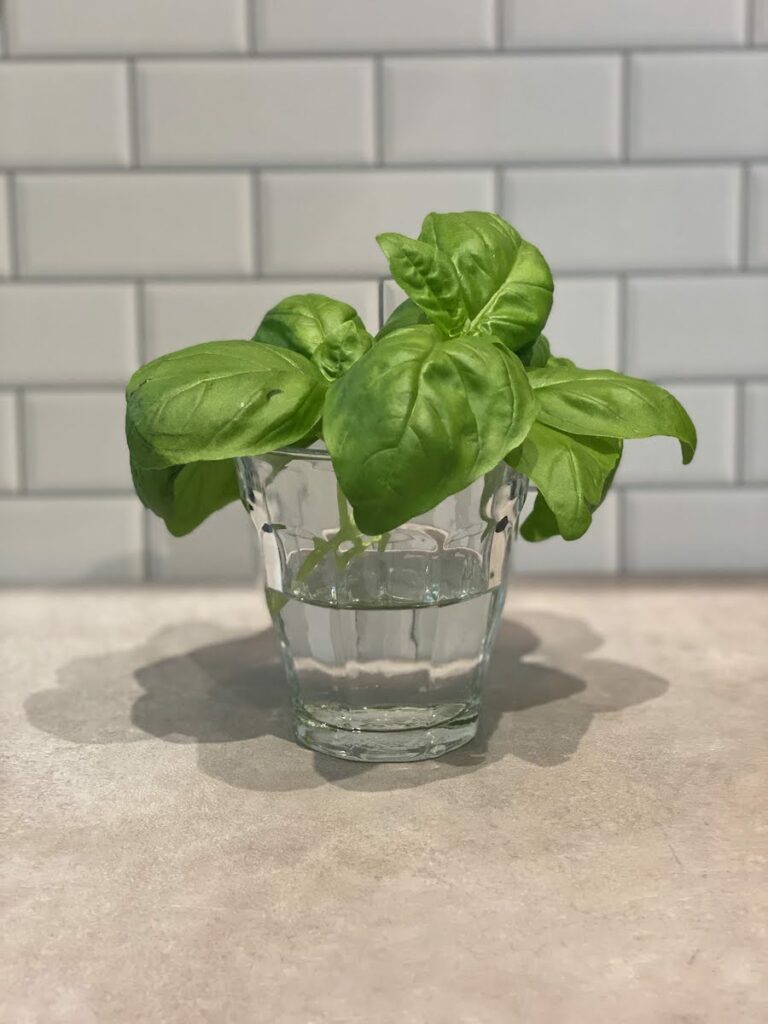
For long-term preservation, you have a few options.
- Freezing – Basil stores remarkably well in the freezer. You can make extra pesto to freeze. Or you can blend your basil into water or oil and freeze into ice cubes.
- Drying – You can easily create homemade dried basil, so you no longer have to buy it. To properly dry basil, we recommend air drying or using a dehydrator. You can dry basil in the oven, but use caution as it can quickly get damaged via this method.
Avoid storing your fresh basil leaves in the refrigerator. The exposure to cold air will quickly turn your basil leaves black. To keep your basil harvest in the fridge without damaging it, turn them into a quick pesto or curry paste first.
Growing basil is the best way to ensure a regular, fresh source of basil leaves to spice up your culinary adventures. Now that you know how to harvest basil without killing the plant, you will never want for basil leaves. In what ways will you start incorporating them?
Frequently Asked Questions
How Do You Pick Basil So it Keeps Growing?
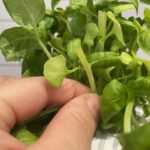
Regular harvesting benefits basil. It causes the plant to direct energy into growing side shoots, which will encourage growth and more foliage, resulting in a denser, bushier, and more productive plant.
Once the plant is fully established, cut it down every 10 days to two weeks, cutting full stems just above leaf nodes, so the plant’s total height is 3″ to 4″ tall.
Do You Pick Basil from the Top or Bottom?
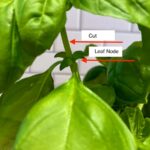
Pick basil from the top to promote growth. Cut full stems just above leaf nodes, cutting the plant back to 1/2 to 1/3 of its pre-harvest height. Doing so causes the basil to direct energy into new growth, producing leaves off of new side shoots.
When Should Basil be Harvested?
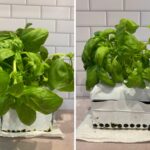
You can begin harvesting basil once the plant is six to eight inches tall, and has as many true sets of leaves. Don’t harvest a young plant, as doing so will inhibit growth.
Harvest basil in the morning to get the most flavorful leaves.
Will Basil Grow Back after Cutting?
Yes, basil will grow back after cutting, and pruning basil is an essential part of basil plant care.
Jennifer is a writer, Nutritionist, and Herbalist who loves all things food. She grows basil alongside other herbs and edible flowers in her garden. Herbs also hold a prominent space in her aerogarden. She enjoys experimenting in the kitchen, finding fun and unique ways to incorporate herbs into daily life. Jennifer is passionate about helping others discover the joy of quality food. And she loves to bring her two kids along on endless food adventures!
